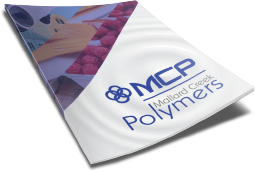
A Brief History of Styrene Butadiene Emulsion Polymers Through 1945
Advanced technology comes in many forms – robotics, quantum computing, gene editing and hydraulic fracturing, to name a few. One advanced technology that is so ubiquitous that it’s easy to miss completely is the world of high-tech emulsion polymers...
Advanced technology comes in many forms – robotics, quantum computing, gene editing and hydraulic fracturing, to name a few. One advanced technology that is so ubiquitous that it’s easy to miss completely is the world of high-tech emulsion polymers. Without a doubt, the world we know and love would not exist if it weren’t for the chemists who learned how to string basic elements like carbon and hydrogen together in long chains to form industrial plastics, acrylics, rubbers, and resins.
Polymers have been a part of making things since the beginning of human history. Bone, ivory, cellulose, natural rubber, cotton, silk and wool are examples of organic polymers people have traditionally used to create a better world for themselves. From a manufacturing perspective, organic polymers pose a number of challenges, not the least of which are limited supplies, inconsistency in quality, and crude supply chains that are easily broken. Prior to the development of synthetic emulsion polymers, industry was challenged to meet the demands of a growing global marketplace, and this limitation created a world where the control of natural resources was a strategic imperative. Many times this led to war, as this article will show.
Generally speaking, it was the development of synthetic polymers in the form of plastic and rubber that profoundly changed the scope and scale at which manufacturers could satisfy a growing global marketplace.
A game of eight-ball, anyone?
A well-known story – at least among chemists – about elephants and the game of billiards serves as an interesting introduction to synthetic polymers. Cue sports are very old games, and up until the mid-nineteenth century, the balls were made of ivory. Ivory is a natural polymer that comes from elephant tusks, and it was in such high demand that elephant herds were being obliterated. It’s impossible to imagine a world in which no substitute for ivory was ever formulated because John Wesley Hyatt solved the billiard-ball-supply problem with his patent on Celluloid in 1869. Celluloid was the first commercially viable synthetic plastic specifically formulated to be used in billiard-ball production, but dentures and piano keys could also be made from Hyatt’s invention. Needless to say, elephants were very happy. It should be noted that Alexander Parkes is credited with inventing the first true plastic – Parkesine – in 1862, but his compound never became a successful commercial product. Neither Celluloid nor Parkesine were 100% synthetic but derivatives of organic polymers.
Want to dive in and learn more about early synthetic polymers? Click here.
Bakelite was a game-changer. Developed by Leo Baekeland in 1909, Bakelite was the first true, 100 percent synthetic plastic. Its heat resistance and ability to be easily molded put it in high demand among manufacturers, especially car manufacturers who were ramping up for unprecedented market demand.
The collision of big industry, war, and styrene-butadiene emulsion polymers
While the invention of plastics changed the course of history, the invention of synthetic rubber just afterward is an equally impressive milestone. How it was discovered and made suitable for mass production is yet another interesting story demonstrating how polymers have made the world a better place.
By the 1900s, particularly in Europe and the United States, large-scale, global industrial networks were well established, and by the 1930s, automobiles were starting to be purchased on a grand scale. The automobile industry became vast as supply lines expanded to accommodate production and a flood of innovations. A key material needed to produce all those cars, trucks, planes and military vehicles was rubber.
Synthetic rubber products had been explored by various chemists throughout the early 1900s, most notably the German conglomerate I. G. Farben and its subsidiary, the Bayer Company. Farben researchers developed a polymerization process for butadiene and styrene using sodium, and by adding carbon black, the end product was synthetic rubber more durable than natural rubber. The product was called Buna S, but mass production of Buna S was still not viable.
As World War II unfolded in 1939, the United States had developed leadership in synthetic rubber research, but natural rubber was still the dominant resource for industrial production. Also by that time, supplies from wild rubber trees in South America had been far surpassed by rubber tree plantations in Malaysia and Indonesia, yet the Asian-Pacific market was cut off from the United States when Japan invaded the Dutch East Indies in 1942. With only a modest stockpile of natural rubber on hand, the United States had only a few months to figure out how to make the production of 100 percent synthetic rubber a reality. The United States and its allies would likely be on the losing end of World War II if its chemists and leaders failed.
In 1940 and under the direction of Rubber Reserve Corporation, an entity set up by the Roosevelt administration to coordinate synthetic rubber research, the largest U.S. producers agreed to share patent and manufacturing information to solve the supply problem. Universities, transportation companies and tech firms outside of rubber joined the effort. On top of research and development, new plants had to be built. But the effort paid off, and from 1942 to 1945, synthetic rubber production went from 2,241 tons per year to 920,000 tons per year. The core product was called GR-S, and it was formulated with a polymerization of 75-percent butadiene and 25-percent styrene, a formula still standard for synthetic rubber production. The United States not only was on the winning side of World War II, it built an industrial powerhouse for synthetic rubber production that would fuel prosperity in the years to come. Styrene-butadiene rubber and styrene-butadiene latex were set to become vital to multiple industries, including aerospace, energy, consumer products and transportation.
Want to learn more about the development of styrene-butadiene rubber during World War II? Click here.

 Construction
Construction
 Nonwovens
Nonwovens
 Adhesives
Adhesives
 Textiles
Textiles
 Printing & Packaging
Printing & Packaging
 Paper
Paper
 Paints & Coatings
Paints & Coatings





